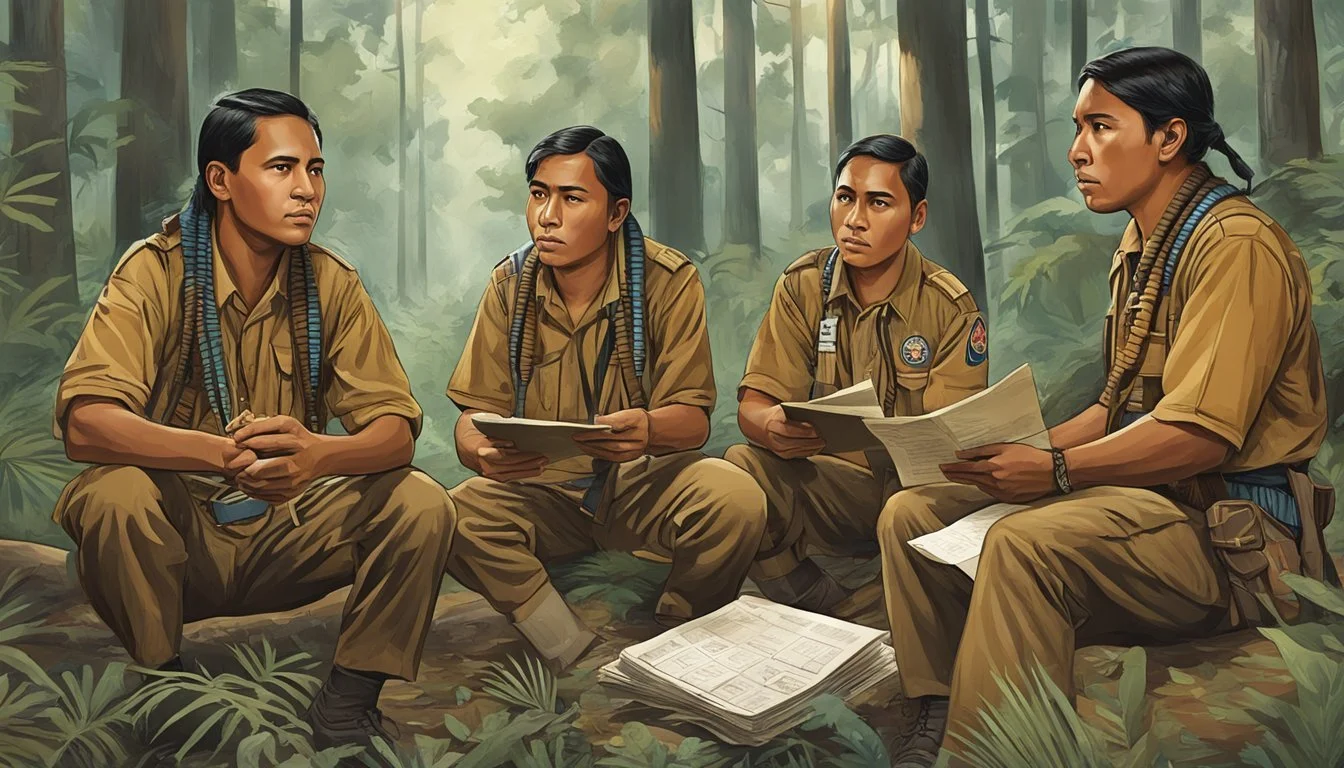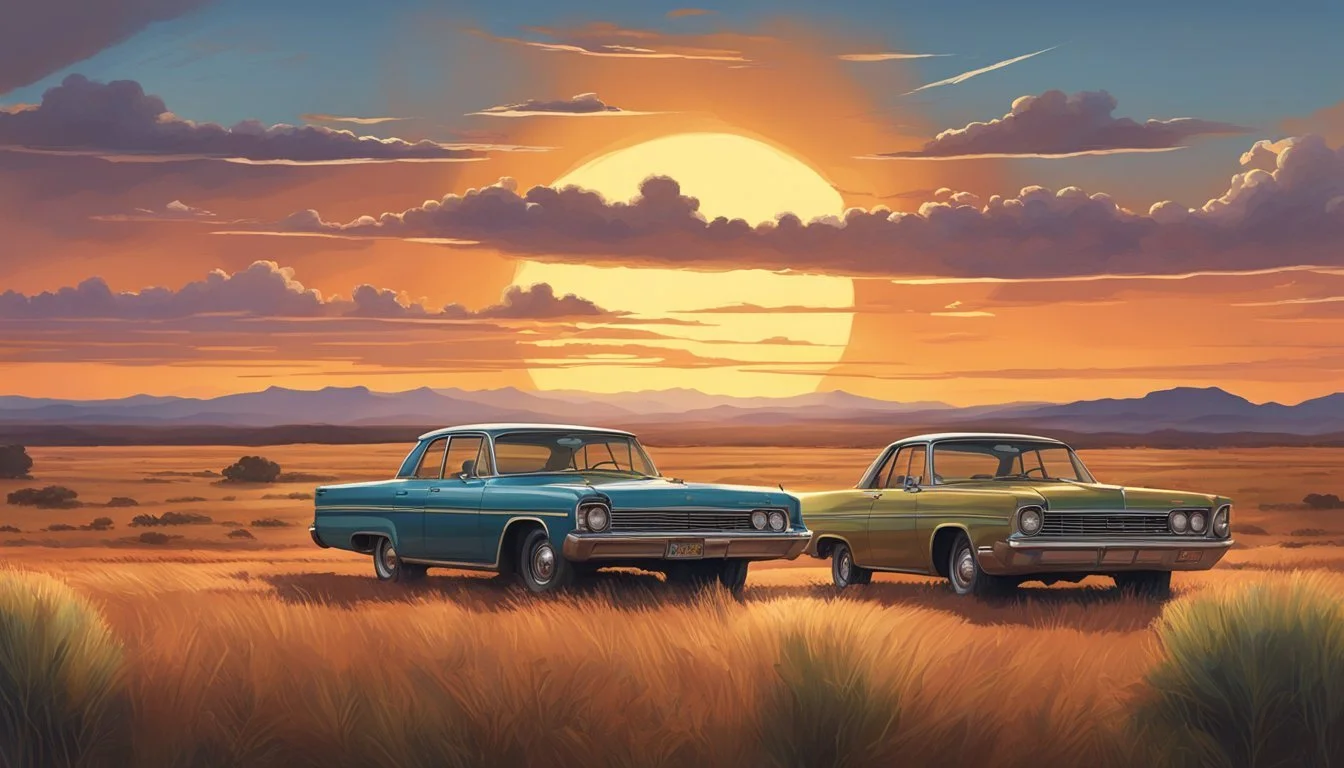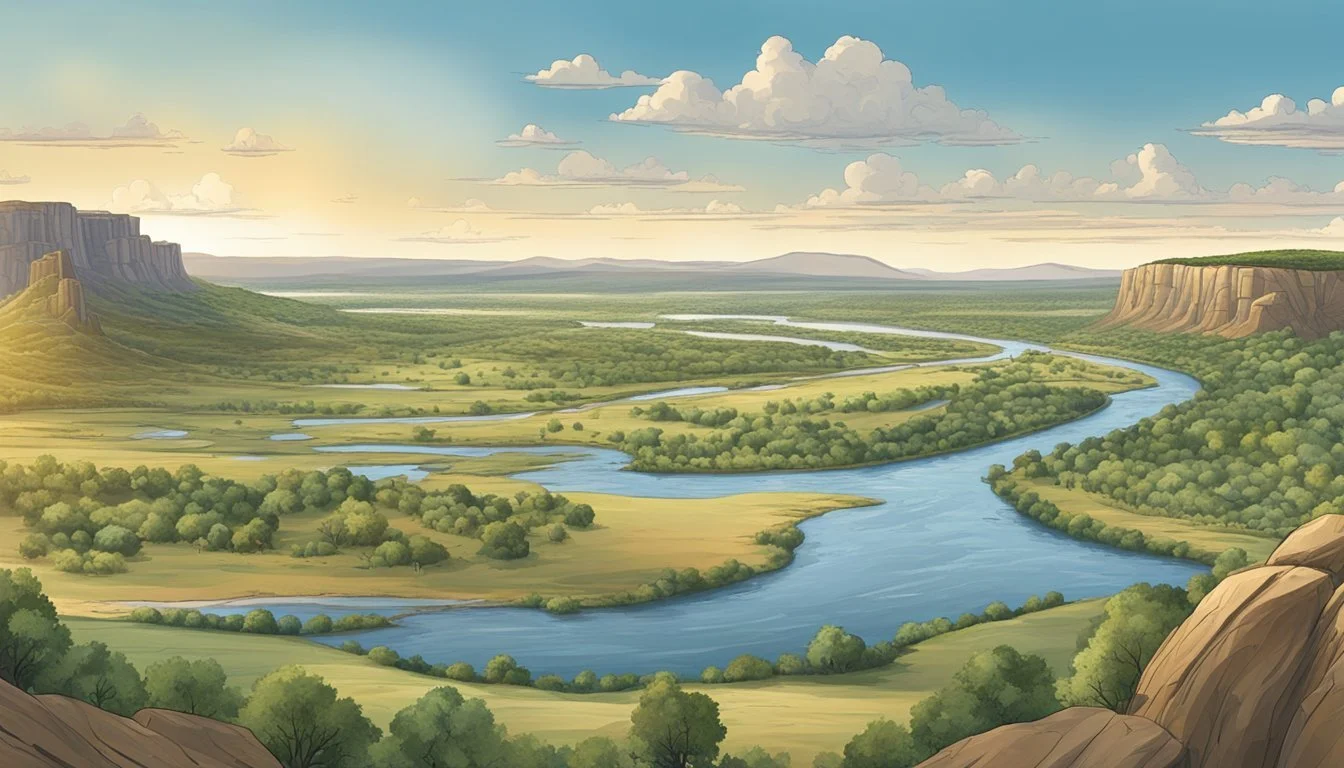8 Revealing Documentaries About Oklahoma
Uncovering the Sooner State's Hidden Stories
Oklahoma's rich history and complex social fabric have made it a captivating subject for documentary filmmakers. From tales of the Old West to modern true crime stories, the Sooner State has been the backdrop for numerous compelling documentaries that shed light on its people, culture, and events.
These documentaries offer viewers a deeper understanding of Oklahoma's diverse narratives, exploring topics ranging from historical tragedies to contemporary social issues. By examining the state's past and present through the lens of non-fiction filmmaking, audiences gain valuable insights into the forces that have shaped Oklahoma and its residents over time.
1) Oklahoma City Bombing: Terror Revisited
The Oklahoma City bombing of April 19, 1995, remains one of the deadliest domestic terrorist attacks in U.S. history. A truck bomb detonated outside the Alfred P. Murrah Federal Building, killing 168 people and injuring hundreds more.
HBO's documentary "An American Bombing: The Road to April 19th" offers a fresh perspective on this tragic event. Directed by Marc Levin, the film explores the roots of anti-government sentiment that led to the attack.
The documentary features interviews with survivors and family members of victims. It examines the lasting impact of the bombing on Oklahoma City and the nation as a whole.
Timothy McVeigh, the primary perpetrator, was motivated by extreme anti-government beliefs. The film traces the development of these ideologies and their role in the attack.
"An American Bombing" provides a comprehensive look at the events surrounding the bombing. It analyzes the social and political climate that contributed to this act of domestic terrorism.
By revisiting this tragedy, the documentary serves as a sobering reminder of the consequences of extremism. It offers viewers a chance to reflect on this dark chapter in American history.
2) The Unseen Choctaw Code Talkers
The Choctaw Code Talkers played a crucial role in World War I, using their native language to transmit secret messages. Their efforts helped turn the tide of the war in favor of the Allies.
In 2022, an updated documentary showcasing the work of these brave soldiers was presented at the Oklahoma History Center. The film highlights how the Choctaw language became a powerful tool on the battlefield.
During World War I, Choctaw soldiers from Oklahoma were stationed in France. They communicated tactical information across battlefield phone lines in their native tongue, confounding enemy forces who could not decipher the messages.
The Choctaw weren't the only Native American code talkers. Members of the Cherokee and Comanche tribes also served in similar roles during World War II. The Navajo "Wind Talkers" received particular recognition for their contributions.
These documentaries shed light on a often overlooked aspect of military history. They reveal the ingenuity and bravery of Native American soldiers who used their cultural heritage to serve their country in times of war.
3) Surviving Disaster: Moore Tornado
The Moore tornado of May 20, 2013, was a catastrophic EF5 tornado that struck Moore, Oklahoma. It left a 14-mile path of destruction, killing 24 people and injuring over 200 others.
This powerful tornado was part of a larger outbreak affecting multiple states. It was the third time in 14 years that an exceptionally violent tornado had hit Moore.
Several documentaries have been produced about this devastating event. These films capture the raw power of nature and the resilience of the human spirit in the face of tragedy.
One notable documentary is "Oklahoma's Deadliest Tornadoes" by NOVA. It examines the science behind these killer storms and explores efforts to improve tornado prediction and warning systems.
Another film, "Where Was God?", focuses on the personal stories of survivors and their faith in the aftermath of the disaster. It showcases the community's strength and recovery efforts.
These documentaries provide valuable insights into the impact of natural disasters on communities. They highlight the importance of preparedness and the ongoing challenges of forecasting severe weather events.
4) Black Wall Street: Before the Flames
Tulsa's Greenwood District, known as Black Wall Street, flourished in the early 20th century. This thriving African American community was a testament to entrepreneurship and economic success.
O.W. Gurley, a prominent Black businessman, played a crucial role in establishing the district. He purchased land and sold parcels exclusively to other African Americans, fostering a self-sustaining economic ecosystem.
The area boasted numerous Black-owned businesses, including hotels, restaurants, and professional services. It became a hub of prosperity, education, and culture for African Americans in Tulsa.
Photographs from the era showcase well-dressed residents and impressive brick buildings lining the streets. The Vernon Chapel A.M.E. Church, built in 1905, stood as a symbol of the community's spiritual strength.
Black Wall Street's success story attracted residents from across the country. It represented a beacon of hope and possibility for African Americans during a time of widespread discrimination and segregation.
The district's achievements were remarkable, especially considering the challenges faced by Black Americans in the Jim Crow era. Its prosperity, however, also fueled resentment among some white Tulsans.
5) Oil Empire: The Boom in Osage County
The early 20th century saw a dramatic transformation in Osage County, Oklahoma. In 1905, oil production surged, with over 300 wells coming online.
This discovery made the Osage Nation incredibly wealthy. They became known as the richest community in the world at the time due to their oil reserves.
The boom attracted attention from across the country. Osage County quickly became one of the most renowned oil-producing regions in the United States.
Between 1901 and 1930, the county produced a staggering 319 million barrels of crude oil. This massive output fueled economic growth and development in the area.
However, the newfound wealth also brought challenges. The Osage faced exploitation and violence from those seeking to profit from their resources.
The story of the Osage oil boom is complex, involving themes of prosperity, cultural change, and conflict. It remains a significant chapter in Oklahoma's history.
6) Route 66: Oklahoma's Road to History
Route 66 holds a special place in Oklahoma's history. The iconic highway stretches across the state, connecting small towns and big cities alike.
Several documentaries explore Oklahoma's connection to the Mother Road. These films capture the spirit of adventure and nostalgia associated with Route 66.
One notable documentary, "The Road to Will," follows Steve McAllister's journey along Route 66. It culminates at the Will Rogers Memorial Museum in Claremore, Oklahoma.
Another film, "Route 66: The Main Street of America," celebrates the highway's 100th anniversary. It showcases the road's significance to Oklahoma and other states it passes through.
The Oklahoma Route 66 Museum in Clinton offers visitors a comprehensive look at the highway's history. It features exhibits that highlight the road's impact on the state and nation.
These documentaries and museums preserve the legacy of Route 66 in Oklahoma. They remind viewers of the highway's role in shaping the state's cultural landscape.
7) The Osage Murders: A Silent Crime
The Osage Murders of the 1920s remain one of Oklahoma's most disturbing chapters. This dark period saw numerous members of the Osage Nation murdered under mysterious circumstances.
The crimes occurred on the Osage Reservation in Oklahoma, where the tribe had become wealthy due to oil discoveries on their land. This newfound wealth made them targets for unscrupulous individuals seeking to gain control of their assets.
Over 60 Osage people died during this time, with many deaths initially ruled as accidents or natural causes. The true extent of the conspiracy only came to light years later.
The case gained national attention and led to one of the FBI's first major homicide investigations. It exposed a complex web of corruption involving local officials, businessmen, and even family members.
Recent documentaries and exhibits have shed new light on these events. They explore not only the murders themselves but also the legal and social context that allowed them to occur.
The Osage Murders serve as a stark reminder of the injustices faced by Native American communities. They highlight the importance of preserving and sharing these stories to ensure such crimes are never forgotten or repeated.
8) The Dust Bowl: Oklahoma's Struggles
The Dust Bowl era of the 1930s profoundly impacted Oklahoma, transforming vast swathes of farmland into barren deserts. Severe drought and poor agricultural practices led to massive dust storms that devastated the region.
Oklahoma farmers faced unimaginable hardships during this time. Crops failed, livestock perished, and families struggled to survive in increasingly harsh conditions. Many were forced to abandon their homes and livelihoods.
Documentaries like "The Dust Bowl" by Ken Burns and "Dust to Eat" provide firsthand accounts of this environmental catastrophe. They chronicle the daily challenges faced by Oklahoma residents, from dust-filled homes to widespread poverty and malnutrition.
These films highlight the resilience of Oklahomans who endured years of drought, dust, disease, and economic hardship. They showcase the human stories behind this historic disaster, offering viewers a glimpse into a pivotal moment in Oklahoma's history.
Through interviews, archival footage, and expert analysis, these documentaries bring the Dust Bowl era to life. They serve as powerful reminders of the impact of environmental changes on communities and the importance of sustainable land management practices.
Cultural Significance of Oklahoma in Film
Oklahoma's rich history and diverse landscapes have made it a captivating subject and setting for numerous films and documentaries. The state's representation in cinema has shaped perceptions and highlighted its unique cultural heritage.
Impact on Local Communities
Film productions in Oklahoma have brought economic benefits and increased tourism to many areas. The success of "Killers of the Flower Moon" and "Reservation Dogs" has drawn attention to Osage County and Okmulgee, respectively. These projects have created job opportunities for local crew members and actors.
Local businesses often see a boost during filming, with cast and crew patronizing restaurants, hotels, and shops. The exposure from these productions can lead to long-term tourism increases as fans visit filming locations.
Many communities take pride in seeing their hometowns on screen, fostering a sense of cultural identity and shared history.
Representation in Media
Oklahoma's portrayal in film has evolved over time, moving beyond stereotypes to showcase its complexity. Early depictions often focused on the state's frontier history and Native American cultures.
Recent productions like "Reservation Dogs" have provided more authentic representations of contemporary Native American life in Oklahoma. This shift has allowed for more nuanced storytelling and increased visibility for underrepresented communities.
Documentaries such as "Oklahoma: A Past Preserved" have helped preserve and share the state's history with wider audiences. These films serve as important educational tools, highlighting Oklahoma's cultural diversity and historical significance.
The rise of Oklahoma-based filmmakers has led to more locally-produced content, offering insider perspectives on the state's unique culture and challenges.
Exploration of Historical Themes
Oklahoma's history is rich with compelling stories and pivotal events that have shaped the state's identity. Documentaries exploring these themes offer viewers insights into the complex tapestry of Oklahoma's past.
Indigenous History
Oklahoma's indigenous heritage forms a crucial part of its historical narrative. Documentaries delve into the experiences of Native American tribes, their forced relocation, and subsequent impact on the state's culture. These films often feature interviews with tribal elders and historians, providing firsthand accounts of traditions and struggles.
Archival footage and photographs bring to life the early days of Indian Territory. Many documentaries explore the complexities of land allotment and the eventual statehood process. They highlight how indigenous peoples have maintained their cultural identities despite significant challenges.
The Dust Bowl Era
The Dust Bowl of the 1930s left an indelible mark on Oklahoma's landscape and people. Documentaries on this topic often use stark imagery of dust storms and abandoned farms to convey the era's hardships. Interviews with survivors and their descendants offer personal perspectives on this environmental disaster.
These films examine the agricultural practices and economic conditions that contributed to the crisis. They also explore the mass migration of Oklahomans to other states, particularly California. The resilience of those who stayed and worked to rehabilitate the land is a common theme.
Documentaries frequently discuss the long-term effects of the Dust Bowl on Oklahoma's economy and culture. They may include scientific explanations of the ecological impact and the subsequent conservation efforts that transformed farming practices in the region.






